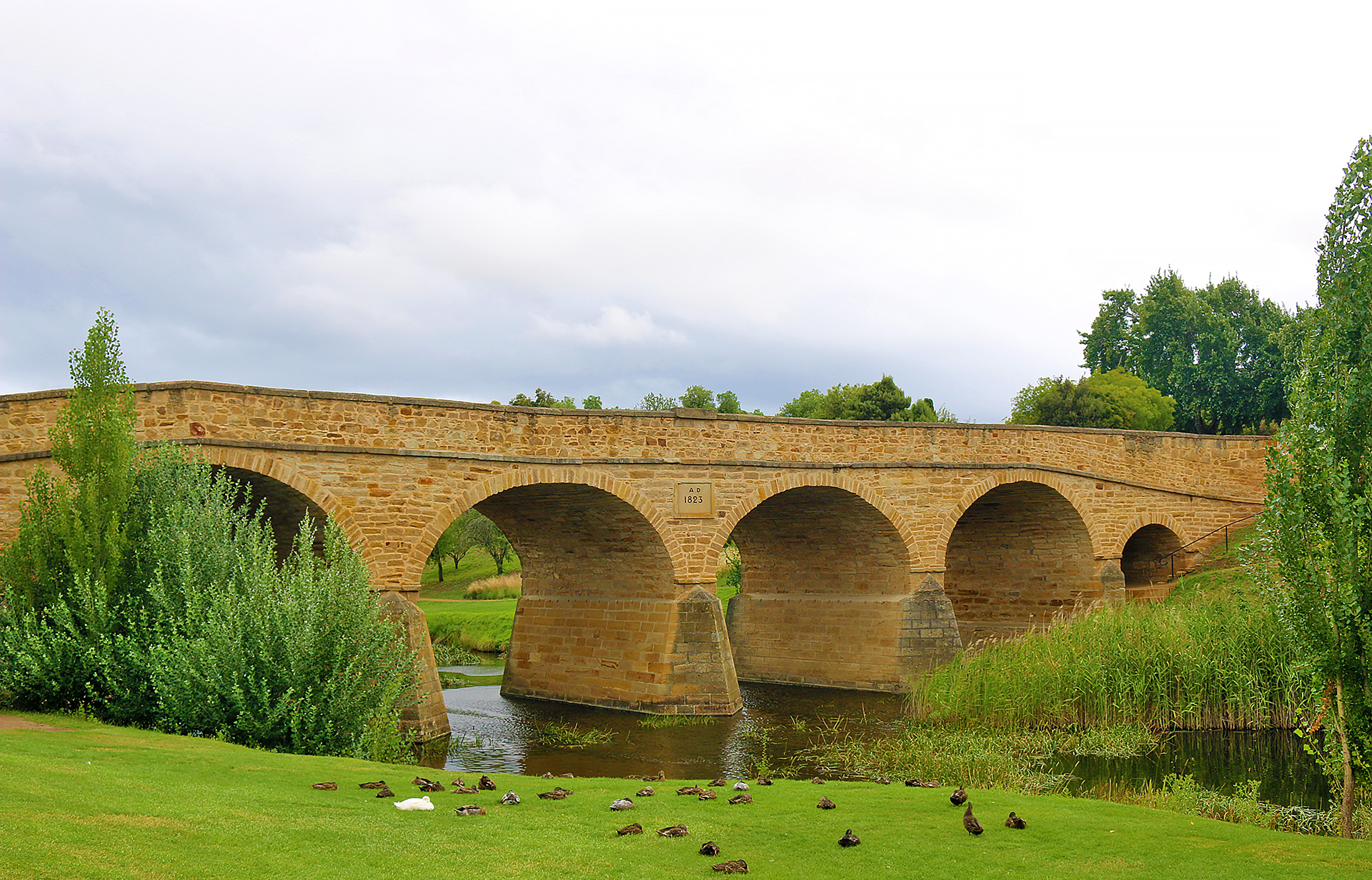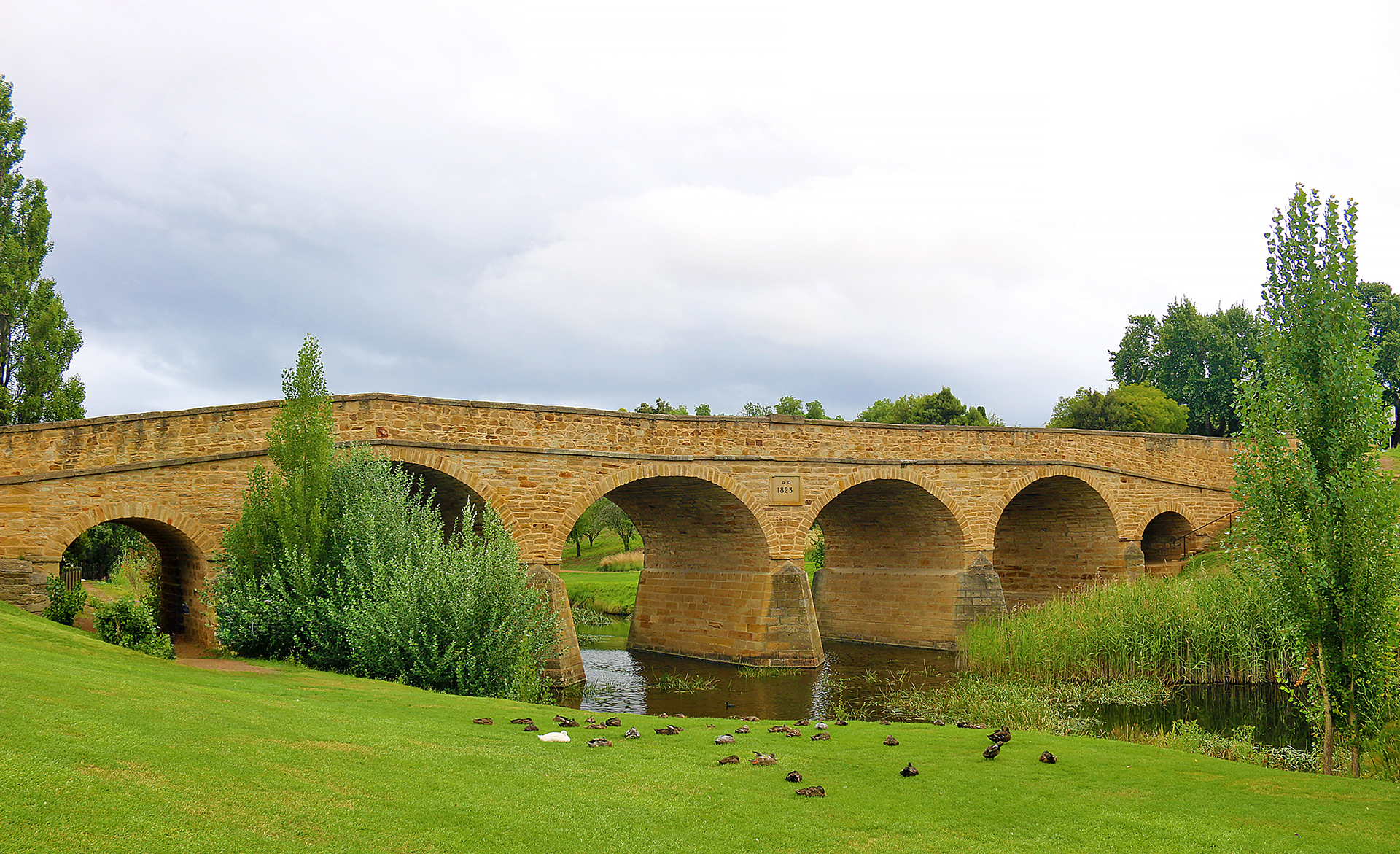On the way to Hobart International Airport to catch a flight back to Sydney, we decided to stop at the oldest stone span in Australia: Richmond Bridge in Tasmania, which is also currently the oldest surviving bridge in Australia.
The Oldest Stone Span in Australia: Richmond Bridge in Tasmania

This shallow section of Coal River has long been a crossing point and a place of connection since the first stone was laid on Thursday, December 11, 1823 with construction under the supervision of Thomas Bell and William Hartley Wilson, who was the superintendent of stonemasons. Known as “Bonnie William from Dundee” in Scotland, Wilson is almost certainly the person responsible for the design of the bridge.
“When colonists looked for a suitable crossing place, they followed the lead of the Mumirimina and their neighbours the Big River people, who for millenia had traversed the river at this point”, according to a sign that is located near the historic bridge. “Construction of a bridge was first suggested by Commissioner John Thomas Bigge whilst on a tour of inspection; for years afterwards, it was known as ‘Bigges Bridge’.”

Haulage roads were specially built to transport the stone for the bridge from nearby Butcher’s Hill.
“The hard labour of construction was provided by a convict work gang about whom we know very little other than the obvious quality of their work”, according to the aforementioned sign. “Governor Arthur estimated that the bridge cost £2000, a staggering amount at a time when tradesmen earned about £40 per year.”
After construction of the bridge was completed, colonists were able to easily get their farm produce to market, which resulted in a substantial economic boost — but for the Mumirimina people, the bridge was a symbol in stone of something far more foreboding: the newcomers were here to stay.
Richmond Bridge has survived numerous floods; and it continues to provide a connecting place long after horse and cart gave way to motor vehicles.
The bridge was recognized as an outstanding historic place and added to the Australian National Heritage List in 2005.
The Ghost of George Grover

A ghost haunts Richmond Bridge stemming from the murder of an employee of the Richmond Gaol named George Grover in 1832, according to legend.
Grover was the Richmond “flagellator” — and was also a very unpopular person.
Late at night on Thursday, March 1, 1832, Grover — who was drunk — stopped for a rest on the bridge and fell asleep as he was returning from “Harvest Home” celebrations. Hours after four convicts found him there and threw him over the parapet, Grover died on the river bed. With his dying words, he accused convict James Colman of the crime — but Colman narrowly escaped conviction for murder.
Final Boarding Call
You can either drive or walk or ride a bicycle over Richmond Bridge or walk under the bridge — or perhaps simply relax on the grassy banks of the Coal River near the bridge and observe the water fowl.
Located approximately 15.5 miles or 25 kilometers north of the city of Hobart, Richmond Bridge carries Wellington Street over the Coal River between Saint Johns Circle and Gunning Street in the city of Richmond in the state of Tasmania in Australia. The bridge is open to the public 24 hours per day, seven days per week. No admission is charged.
Free parking is available on the street nearby — but toilet and washroom facilities are not available.
All photographs ©2024 by Brian Cohen.

